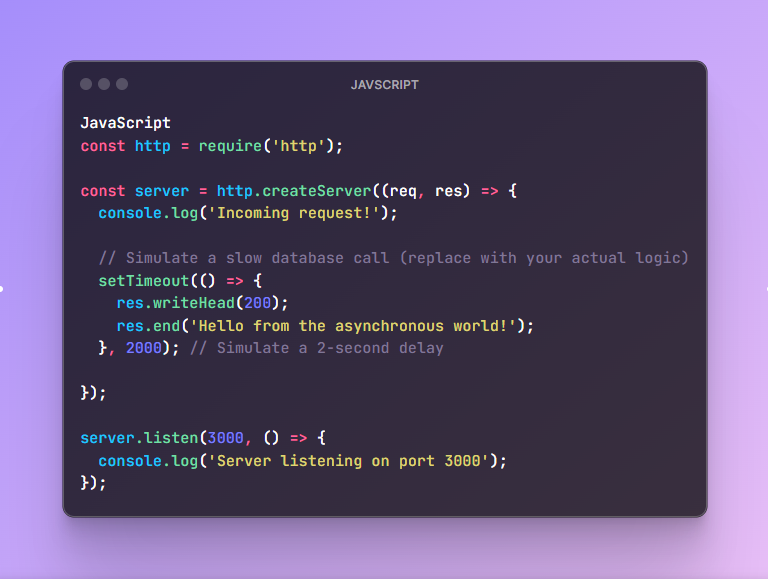Asynchronous Awesomeness: Why Node.js Makes You a Real-Time Rockstar
 Rohan Shrivastava
Rohan Shrivastava
The struggle is real: web pages grinding to a halt, users tapping their feet impatiently.
But what if you could build applications that feel light on their feet, even under heavy loads?
Buckle up, because Node.js, the champion of asynchronous programming, is here to transform you from a server-side slugger to a real-time rockstar.
Why Node.js? All About Speed and Efficiency
Traditional Web Servers: The Bottleneck Blues
Block everything while waiting for tasks to finish.
Slow response times, especially under heavy traffic.
Node.js to the Rescue: The Asynchronous Advantage
Handles multiple requests concurrently using a single-threaded event loop.
Non-blocking operations: tackles tasks that don't require waiting (think database lookups) and moves on.
Event loop in action: parks waiting tasks (like fetching data) and continues processing other requests.
Callback magic: once the waiting task finishes, triggers a callback function to handle the result.
Analogy Alert! Imagine Node.js as a master chef, juggling multiple orders at once.
They pre-prep what they can and delegate waiting tasks (callbacks) to assistants.
This keeps everything moving smoothly, and hungry customers (users) get their food (responses) fast!
Unleash Your Inner Rockstar: Building a Simple Node.js Server
Let's dive into some code to see asynchronous programming in action.
Here's a basic Node.js server that showcases its power:

- Breakdown of the Code:
Import the
httpModule: We need this to create our server.Create the Server: The
createServerfunction defines how the server handles incoming requests.Incoming Request! We log a message when a request arrives.
Simulate a Slow Database Call: We use
setTimeoutto simulate a 2-second delay (replace this with your actual logic).Send the Response (Eventually): After the simulated delay, we send a friendly message back to the user.
Start the Server and Listen: We fire up the server on port 3000 and log a confirmation message.
Run this code (
node your_script.js) and open http://localhost:3000 in your browser.You'll see the server message instantly, even though the response takes 2 seconds.
This is the magic of asynchronous programming!
Conclusion: Asynchronous Applications for the Win
By embracing Node.js and its asynchronous approach, you can build applications that are:
Scalable: Handle high traffic without breaking a sweat.
Real-Time: Deliver a smooth, responsive experience to your users.
Efficient: No more waiting around for tasks to finish.
Subscribe to my newsletter
Read articles from Rohan Shrivastava directly inside your inbox. Subscribe to the newsletter, and don't miss out.
Written by

Rohan Shrivastava
Rohan Shrivastava
Hi, I'm Rohan, a B.Tech graduate in Computer Science (Batch 2022) with expertise in web development (HTML, CSS, JavaScript, Bootstrap, PHP, XAMPP). My journey expanded with certifications and intensive training at Infosys, covering DBMS, Java, SQL, Ansible, and networking. I've successfully delivered projects, including a dynamic e-commerce site and an Inventory Management System using Java. My proactive approach is reflected in certifications and contributions to open-source projects on GitHub. Recognized for excellence at Infosys, I bring a blend of technical proficiency and adaptability. Eager to leverage my skills and contribute to innovative projects, I'm excited about exploring new opportunities for hands-on experiences. Let's connect and explore how my skills align with your organization's goals.